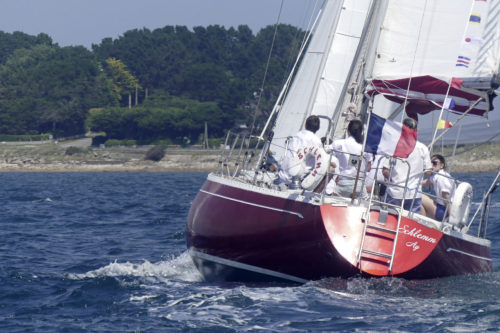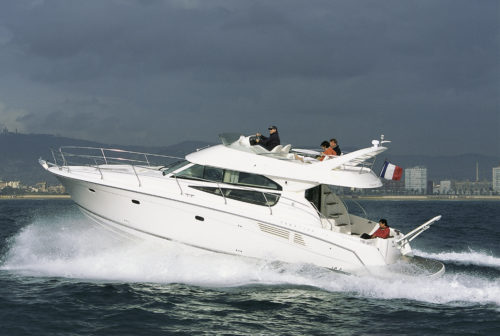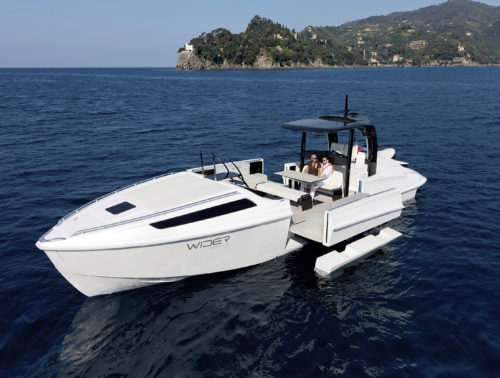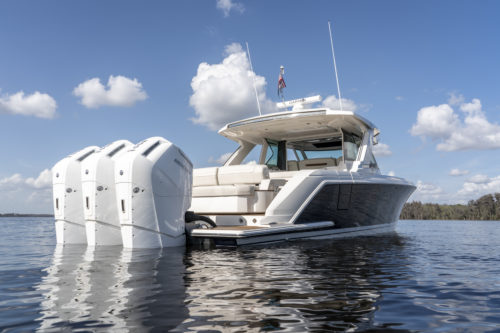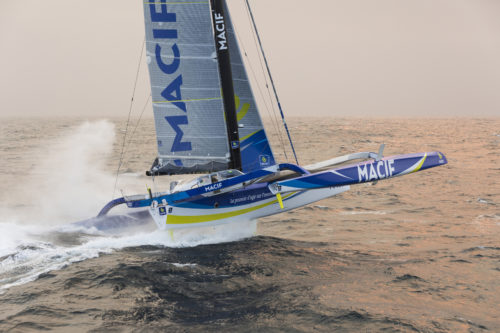Jules Verne Trophy 1997

His 27.30m trimaran, designed by VPLP Design and built 11 years previously by CDK in Port La Forêt, which he had affectionately nicknamed “the valley of the mad” had already had several lives and a number of different names: Poulain, Un Autre Regard, Charal, Lyonnaise des Eaux, Dumez… On Sport Elec, “ODK” was making his sixth attempt to beat this record of 74 days and 22 hours that had been held for three years by Britain’s Robin Knox Johnston, who won the first Golden Globe in 1969 in 313 days, and New Zealand’s Peter Blake on the giant catamaran Enza New Zealand.
With his six crew members – Yves Pouillaude, Hervé Jan, Michel Bothuon, Didier Gainette, Marc Le Fur and Thomas Coville. Let down by adverse weather conditions in the South Atlantic, he decided in January to turn back off the coast of South Africa, with the large white trimaran already four days behind Enza.
Second attempt
Back in Brest, following a meticulous stand-by and check-up for the trimaran, despite an average weather “window”, but on the advice of the American Bob Rice, a renowned route planner, Olivier de Kersauson decided to give it another go, and crossed the virtual line off the coast of Ouessant on March 8. Speed was of the essence because, with the end of the southern summer, the depressions were becoming more and more challenging. When Sport Elec entered the Indian Ocean, Olivier de Kersauson was in a bad mood as he was already 1,000 miles behind Knox Johnston and Blake.
Disappointed, he conceded: “I’ve always hated the Indian Ocean!”. Moreover, when Sport Elec was on the Cape Leeuwin longitude, south of Australia, a leak flooded the engine. No more power, no more communications and therefore no more route planning! Yves Pouillaude, first mate, got this essential power source up and running again after three days down in the hold. Driven along by powerful winds and depressions, Olivier de Kersauson and his crew clawed back their lost time, plunging very far south, with icebergs breaking up, creating growlers. “Until now, we’ve been playing small-time. Now we’re going to start on the real adventure. We’re not just racing around the world now, we’re going to the real danger…”, explained the skipper to his loyal crew, and he knew that they would not be able to bounce back from a collision with a block of ice. But, with luck shining on them, the crew crossed the Pacific without any issues and rounded Cape Horn 33 hours ahead of the record!
A good loser, Peter Blake sent a telex congratulating Olivier de Kersauson, and also Eric Tabarly, his former “mentor”. However, they still had to climb back up the Atlantic, and their on-board computer stopped working. Yves Pouillaude once again worked his magic.
On May 19, Sport Elec beat the round-the-world record in 71 days and 14 hours, after racing more than 24,000 miles at an average of 14.55 knots. At the pontoon in Brest, the crew were welcomed by Peter Blake himself. “Kersau”, both emotional and delighted, finally held this “Jules Verne”. The next day’s headline in the sports newspaper L’Equipe was “Le monde est à eux” (On top of the world). Five years later, Bruno Peyron on Orange reduced the time to 64 days, but the following year, on board his new 33m trimaran Géronimo, Kersauson took it back again… in 63 days! The record then continued to be broken with the various attempts, once again by Bruno Peyron then Franck Cammas, Loïck Peyron, Bruno’s younger brother, and finally Francis Joyon, who set the bar very high at 40 days! In 2017, 20 years after Kersauson’s performance.






















